Until quite recently, say the last century or less, humankind has had to get by on whatever food was close at hand and not moving too fast or putting up too much of a fight. None of this modern-day popping out to Safeway for whatever they happened to be in the mood for. Imagine a caveman saying, “Dude, I’m seriously jonesing for some nachos.”
But some foods seem so hostile, so unpalatable, so inedible, I wonder how anyone ever figured out that they could in fact eat them–and that they’d be worth the bother. I guess if you live in a land of few options, you put considerable effort into trying to make something edible before giving up on it entirely–your survival depends on it.
Take olives, for example. I adore them, but have you ever bitten into one straight off the tree? If you haven’t, don’t! Let’s face it: It takes a lot of work–and time–to render an olive consumable. And those who collect their own snails to make escargots must first put them on a diet and purge them to get all the ick out of their digestive tracts before cooking them. I feel truly sorry for the luckless chumps who find that out the hard way!
These difficult foods reward with some pretty amazing flavors, if only you can get past their initial resistance. I let someone else handle the purging and sautéed these canned snails in some white wine with shallots. Then I piled them onto slices of French bread, slathered it all with a paste of butter, chopped garlic and parsley and pan-toasted it all, until the butter melted, coating the escargots and soaking into the bread. What a rich open-faced snail sandwich it made–much more satisfying than stuffing them back into shells perched in one of those indented serving plates that’s good for only the one function.
As for artichokes, I was amazed–and impressed–when Himself told me that he grew up eating them. This wouldn’t be unusual if he’d grown up in a California family with artichokes growing in the yard. But to set a cooked artichoke on a dinner table in the South took some real initiative in those pre-food television days–it probably would even now.
I’ve come to appreciate the artichoke’s flavor over the years, but it has taken serious effort to muster the courage and patience to forge my way past its prickly suit of armor and into the inner realm of “Holy crap! That hurts!” stickery business that stands between my tender fingers its delicate heart. I can understand what Himself meant when he said that for his child-self, artichoke petals were merely conveyers of the sauce, which had to be scooped up in just the right proportion to the petal. His mom made a dip of mayonnaise and Dijon, so too much was too hot and too tart. Not enough meant too much artichokeyness. Just the right amount of each balanced out the flavors.
So a mixture of nostalgia and curiosity sent us into the kitchen to reexamine the artichoke. This time, Himself wanted to learn to make aioli, the classic plunge for artichokes, and he wanted to do it the classic way, with a whisk rather than a blender or handheld mixer. So I talked him through the process and stepped in to drizzle the oil while he emulsified it into a state of garlicky, lemony velvetude.
[This is as far as I’m willing to go in photographing the Dish of a Thousand Veils, because the artichoke striptease brings us down to the least attractive part of the thing. And no amount of posing it, slathering with it aioli or playing peek-a-boo by arranging loose petals around it can make the heart look very appealing.]
Recipes for the basic preparation of artichokes are more or less the same, so I’ll not bore you with yet another one. Instead, I’ll present some tips for making aioli, since I hear so many people crab about how difficult it is. It’s wonderful stuff and versatile, too, great on so many other dishes as well, including potatoes, seafood, radishes and asparagus, either raw or cooked. And it’s a sensational topping for escargots, in case you’d rather not go nuts with the butter like we did.
Chop about three really fat garlic cloves finely, sprinkle with a generous couple of pinches of kosher salt, and then, using the blade of your chef’s knife, smash and grind the garlic and salt into as fine and smooth a paste as you possibly can and set it aside. (Unless you want chunky-style aioli, be diligent with this step!) Whisk two very fresh, room-temperature egg yolks with a tablespoon of fresh lemon juice (also room temp) until the mixture is pale and frothy. Then begin whisking in 12 ounces of oil, either vegetable or canola oil, or a half-and-half combination of one of those and some good olive oil. If you use nothing but olive oil it can overwhelm the other flavors–and your tongue!
Begin by whisking in a single drop of oil; then another and then another. Once you get those first few drops emulsified, you can increase the flow of oil to a thin stream (see the whisking photo above and note how fine that stream of oil is). Keep whisking as the oil flows, and let it flow more freely as the aioli starts to form. When you have all the oil incorporated (and don’t try to add more than 6 oz. per yolk), whisk in the garlic paste and just a dusting of white pepper (it’s strong stuff). Give it a taste, and adjust the seasonings until the aioli makes you happy.
Depending on your personal taste, you can add whatever spices you like. Or some chopped fresh herbs. Or make it with lime juice or champagne vinegar instead of lemon juice. Once you’ve mastered the basic technique, you’re free to experiment to your (artichoke) heart’s content, nyuk nyuk!
(Obligatory warning time: Eat raw eggs/egg parts at your own risk, and don’t feed them to the very young, the very old, the immune-compromised or the pregnant.)

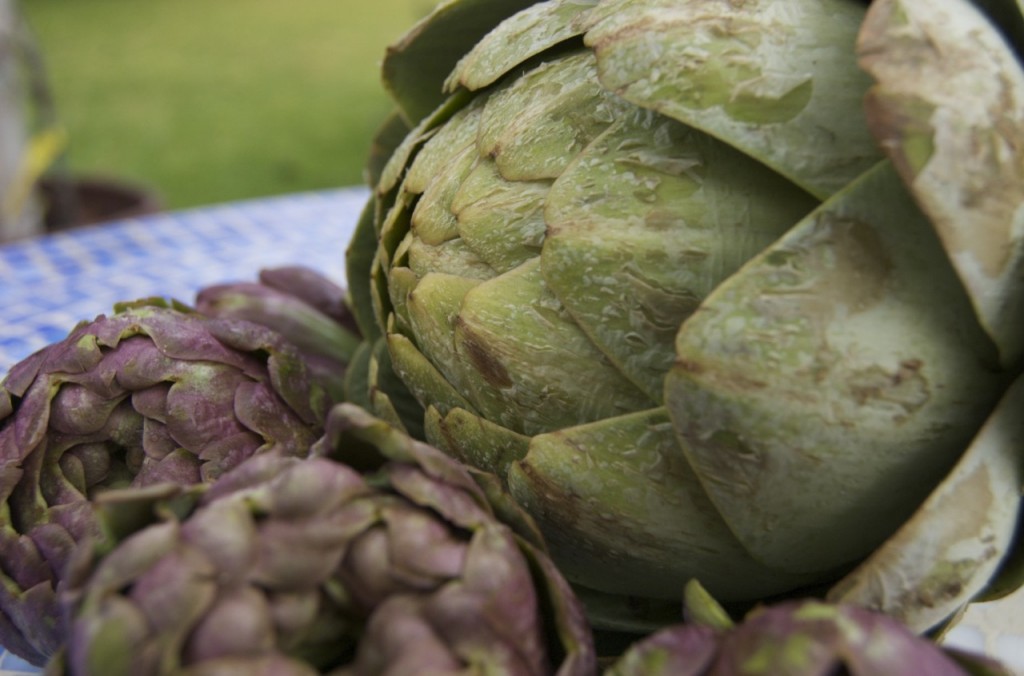
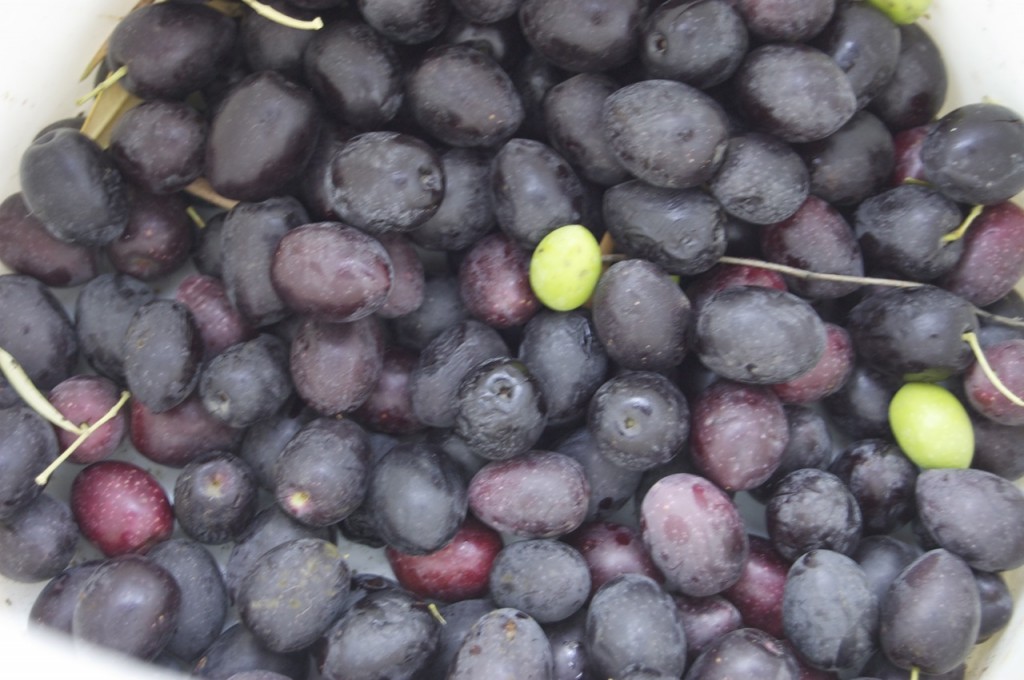

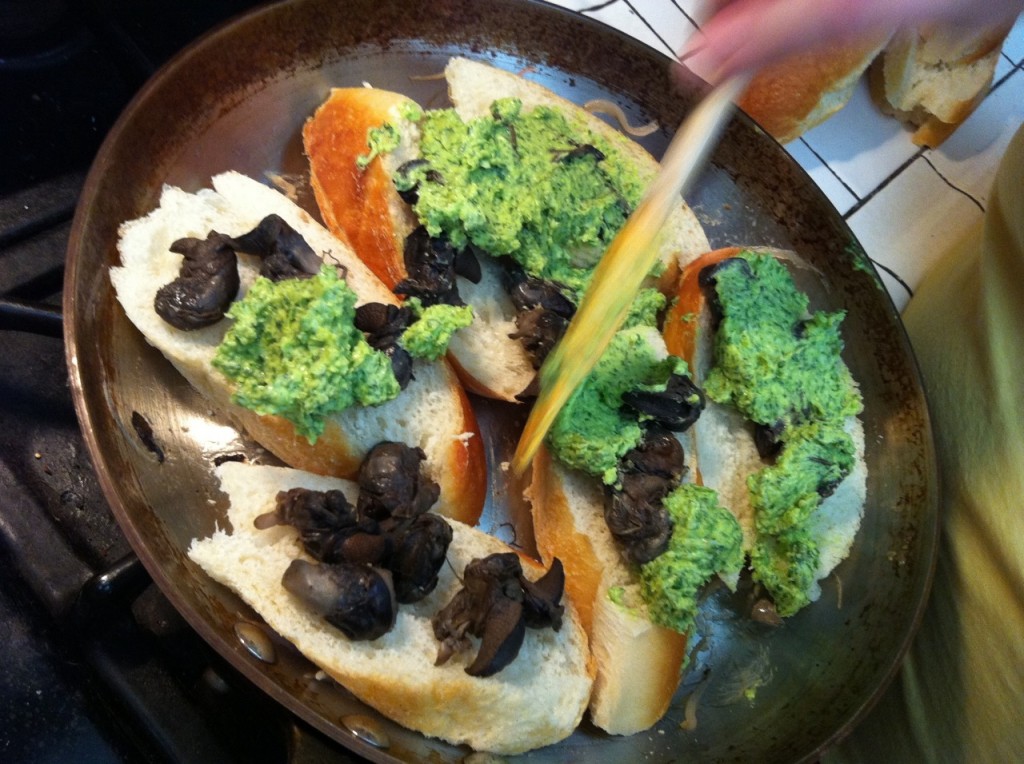
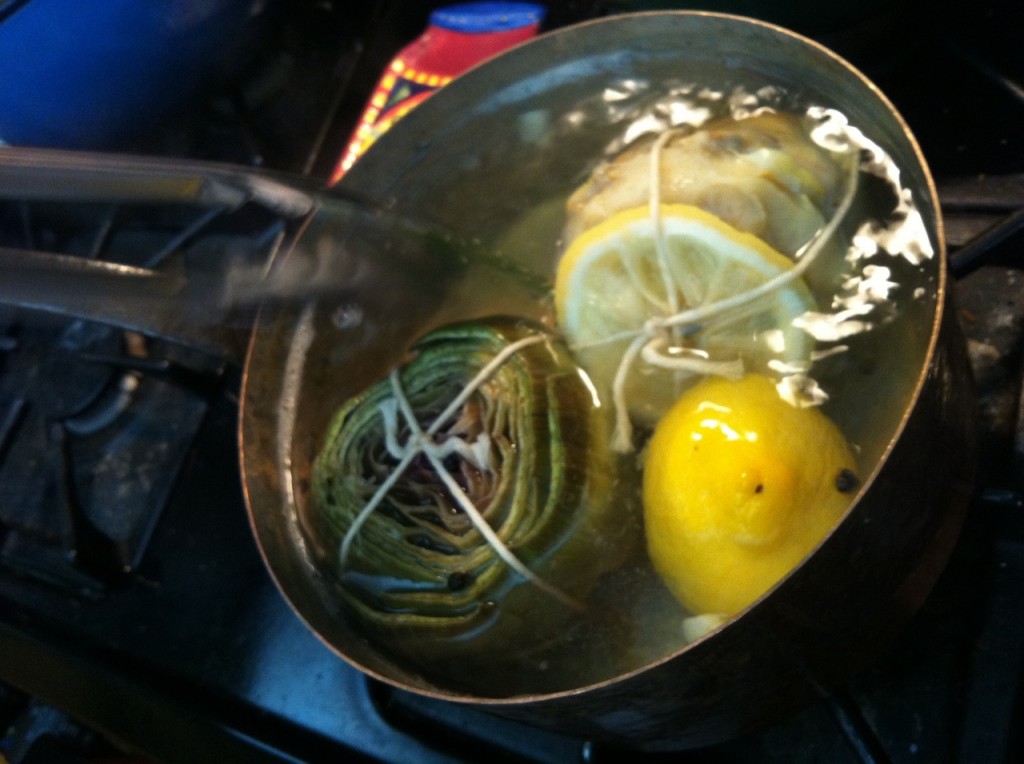
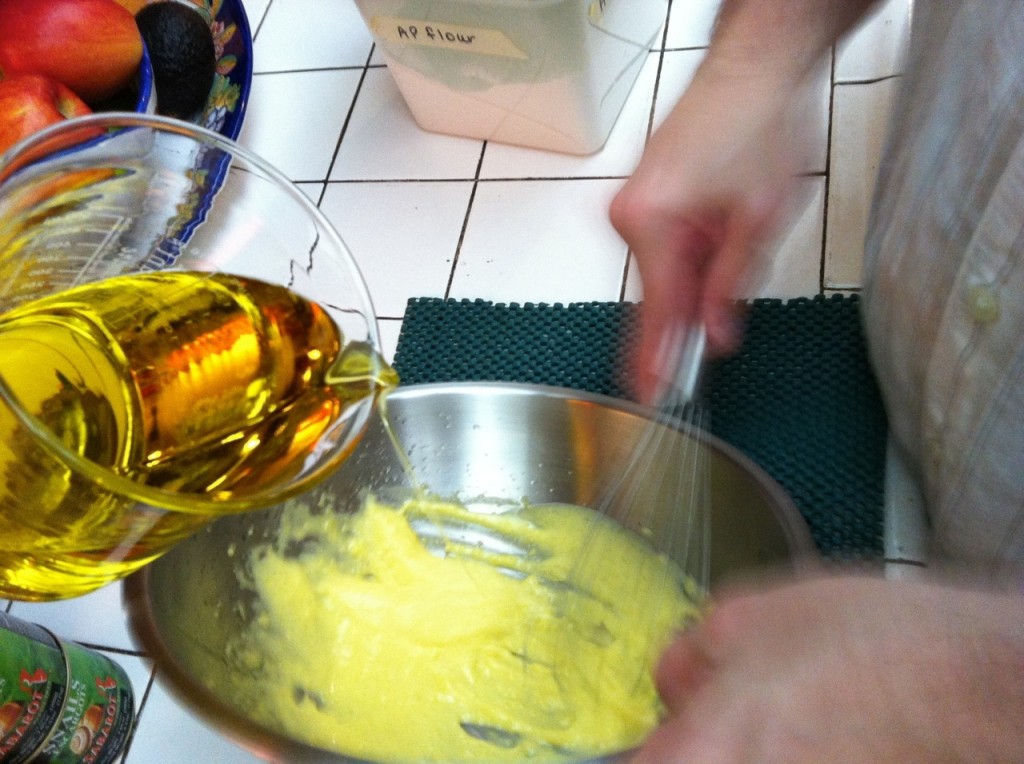
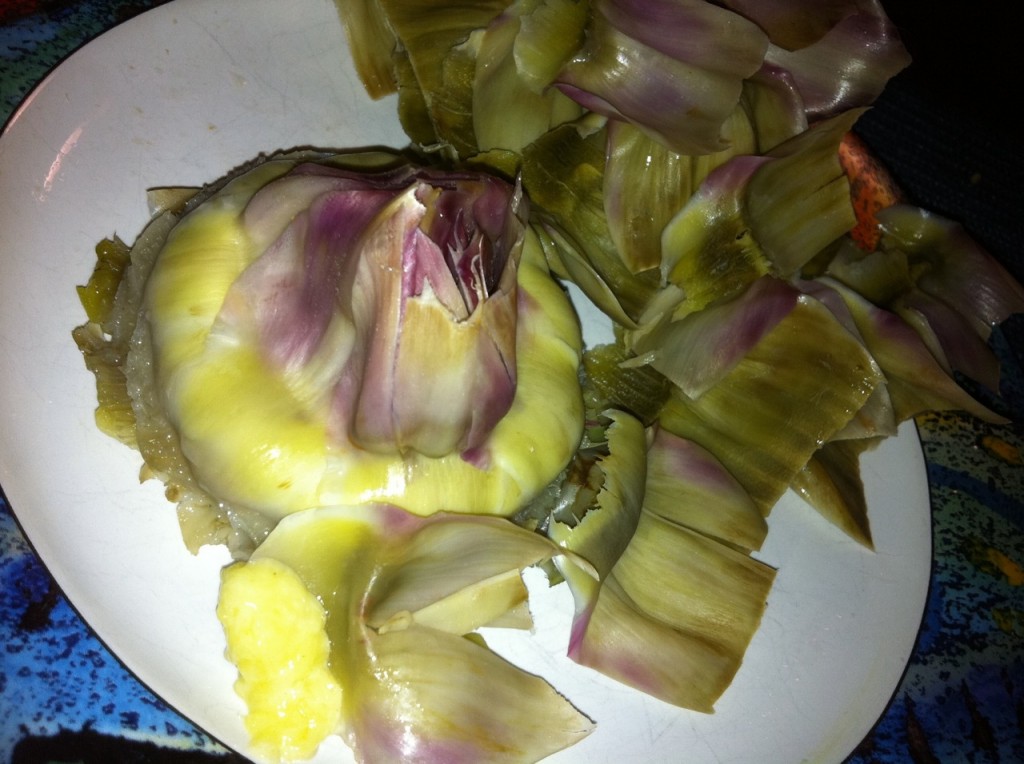
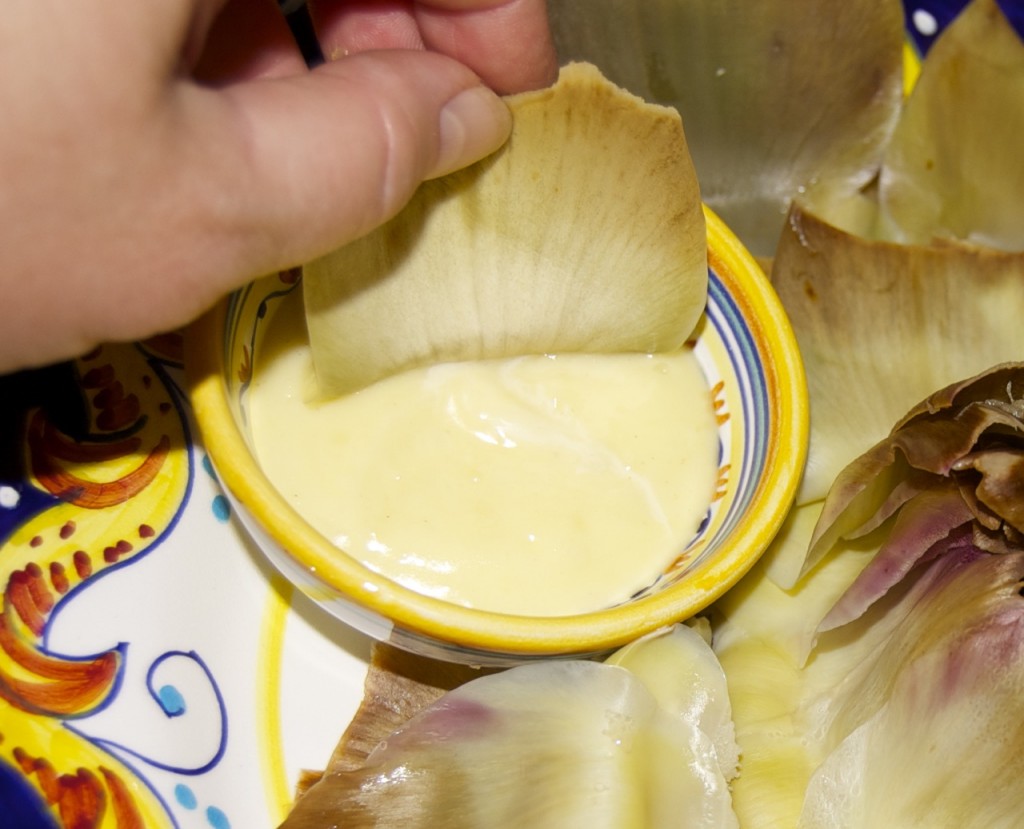















Very fancy eating, those artichokes of yours. But for us peasants, we doused them with a bit of olive oil and garlic, boiled them until tender and then dipped the leaves and heart in salt. Delish.
Wow, that sounds great, but something tells me that if I consumed salt in that wanton a fashion, it would give my doctor high blood pressure!